Corn Crib
A corn crib is a storage facility for holding and drying field corn in the ear, which is then used for animal feed. Its features would include slats (usually horizontal wooden ones) and/or wire netting for ventilation; doors in the ends for accessibility; and anti-rodent provisions (elevating it off ground level, tight flooring). Corn cribs can have gabled or shed roofs, but shed roofs are by far the more common type. The earliest corn cribs were made of log, but few of these survive. Most extant cribs are constructed of frame. "Keystone" shaped cribs, flaring from bottom to top, were designed to prevent settling and to shed water. These types were common in the nineteenth century.
Once machine-milled beveled boards became available, designs tended to feature straight sides rather than flared ones. Hatches in the roof, either cut right into the roof or elevated clerestory style, aided in filling, while doors at the bottom of the cribs helped in unloading. "Cribbing" boards came in several different profiles: slats on wedges; triangular slats cut from two-by-fours; and beveled cribbing. The last of these could be spaced an inch or so apart, thus providing ventilation; other types overlapped. Most corn cribs had wire mesh inside to protect from vermin.
Corn cribs could stand alone, or be incorporated into a barn assembly, either as an integral feature or (probably more frequently) as a shed roof extension. Manufactured corn cribs were produced in the early twentieth century, but disappeared during the metal shortages of World War II. They became popular again in the post-World War II period, generally taking the form of a cylinder with a conical roof. Metal cribs were adopted because wood and labor prices rose, and also because metal cribs were sturdy and required little maintenance. Corn cribs became uncommon after the mid-1950s, when harvest technology changed in several ways: combines made it possible to shell corn in the field; and artificial dryers eliminated the need for a long drying period in the crib. In any case, the importance of field corn in Pennsylvania declined relative to the Midwestern corn and hog belt.
Corn cribs can be found throughout the state, but they are more common in some places than in others. In the North and West Branch Region and in the Central Limestone Valleys Region, corn cribs signify the high importance of field corn in a diversified grain and livestock economy. Some corn cribs in these areas are as long as 75 feet or more. Usually they are sited near a barn, but sometimes towards the outer edge of the farmstead. Field corn was good hog food, and a natural complement to pork production in the region. In the Northern Tier Grasslands Historical Agricultural Region, corn cribs are less common and tend to be later, since field corn was not grown much in the region until modern hybrids became available, and even then, its significance never approached its importance in other parts of the state.
For an introduction to this type of building, see Keith E. Roe, Corncribs in History, Folklife, and Architecture. Ames: Iowa University Press, 1988.
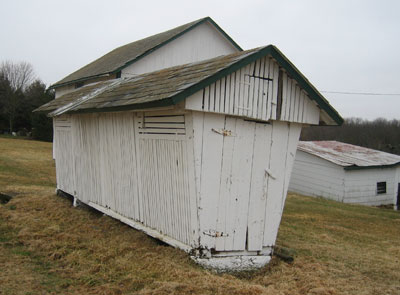
Log corn crib, Heidelberg Township, Lehigh County, c. 1850.
(Site 077-HE-007)
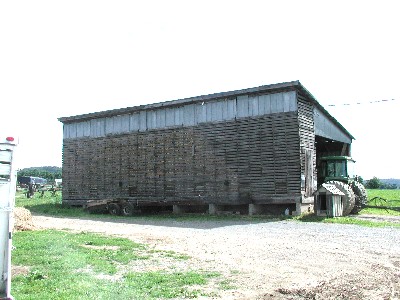
Machine shed and corn crib combination, Columbia County, c. 1945

Shed Roof Corn Crib, Columbia County, c. 1950
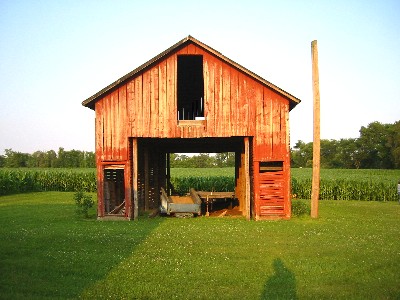
Double corn crib, Northumberland County, c. 1935
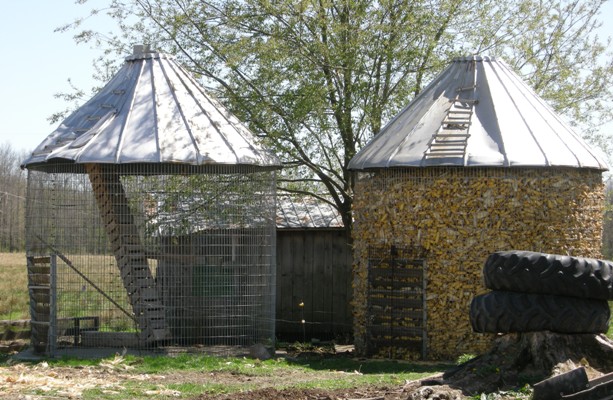
Corn Bins, Mercer County, mid-twentieth century.
A more modern version, popular in the mid-twentieth century, consisted of a woven metal cylinder, with conical roof.
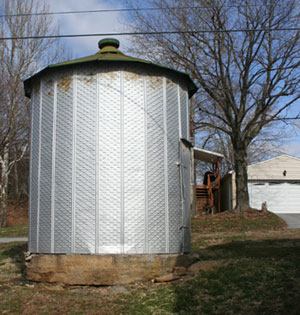
Mass-produced metal corn crib, Lower Windsor Township, York County, c. 1920-40.
(Site 133-LW-003)